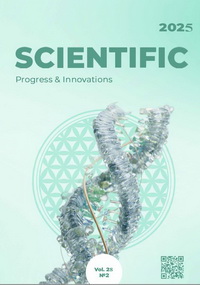Resistance status of potato varieties to early blight under changing climate conditions in Polissia, Ukraine
DOI:
https://doi.org/10.31210/spi2025.28.02.14Keywords:
potato, variety, maturity group, early blight, resistance, infection level, moisture availabilityAbstract
Over the past decade, early blight caused by fungi of the genus Alternaria has remained the dominant potato disease in Ukraine. Its spread has been driven by climate change, particularly rising temperatures and moisture deficits during the growing season. To assess the resistance of potato varieties to early blight under abiotic stress conditions, 25 Ukrainian-bred potato varieties of different maturity groups were studied at the Polissia Research Department of the Institute for Potato Research, NAAS, during 2021–2024. The objective of the study was to determine the dynamics of early blight infection in potato varieties under changing climatic conditions in Polissia, Ukraine, to evaluate their resistance, and to identify varieties with high adaptability to the pathogen under varying moisture levels. The study employed field experiments, phytopathological assessment, and statistical data analysis. The studies conducted in 2021–2024 revealed a significant influence of hydrothermal conditions on disease development. Early-maturing varieties showed the highest levels of Alternaria spp. infection, with initial assess-ments ranging from 2.7 % to 19.5 %, increasing to 22.3–44.5 % by the third assessment. In medium-early varieties, infection ranged from 1.9%–12.2% at the first assessment stage and 17.0–37.3 % at the third. In medium-maturing varieties, the infection rates were 0.8–6.6 % and 11.5–31.7 %, respectively. The decrease in hydrothermal coefficient (HTC) from 0.87 to 0.32 resulted in increased pathogen infection levels in potato varieties, which was confirmed by negative correlation coefficients (r = –0.951...–0.999). The resistance level of the varieties also depended on moisture availability: under severe drought conditions (HTC < 0.50), early-maturing varieties exhibited the lowest resistance (4.0 points), medium-early varieties slightly higher (score 4.7 points), and medium-maturing varieties the highest among all groups (5.2 points). The scientific novelty of the study lies in establishing the relationship between early blight infection severity and hydrothermal conditions of the growing season as well as the maturity group. Moreover, the study identified varieties with consistently high resistance to Alternaria spp., including Radomysl, Tyras, Nahoroda, Avanhard, Opillia, Partner, Mezhyrichka 11, Bazaliia, Lietana, Serpanok, Alians, and Ivankivska rannia. The obtained results can be applied in breeding programs aimed at developing new potato varieties with enhanced resistance to early blight under climate change conditions.
Downloads
Published
How to Cite
Issue
Section
License
Copyright (c) 2025 Scientific Progress & Innovations

This work is licensed under a Creative Commons Attribution 4.0 International License.

 Creative Commons Attribution 4.0 International Licens
Creative Commons Attribution 4.0 International Licens